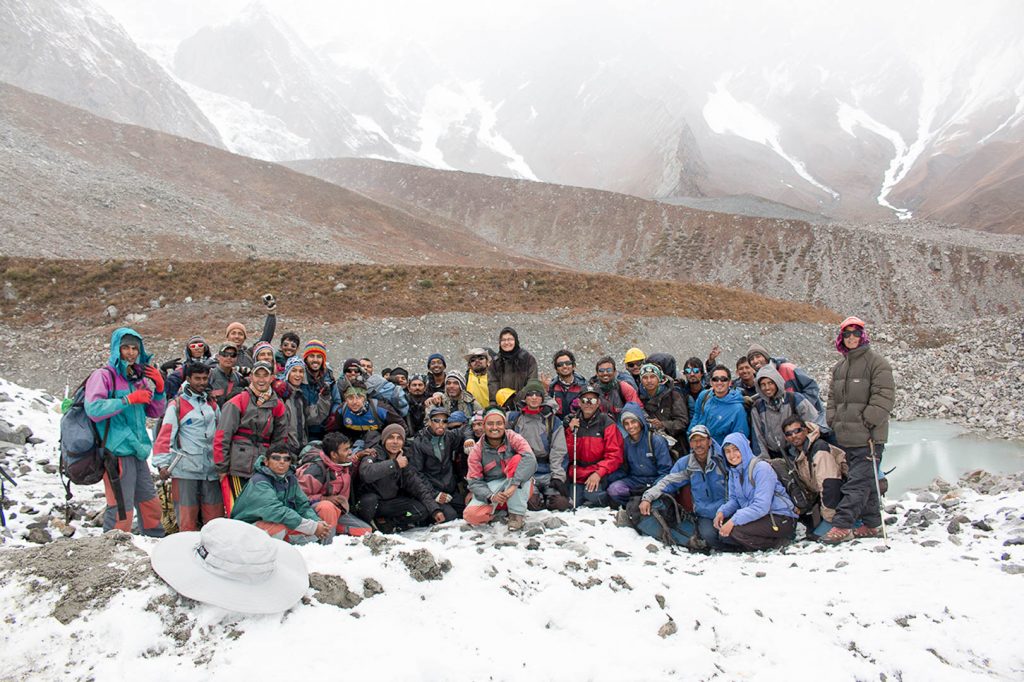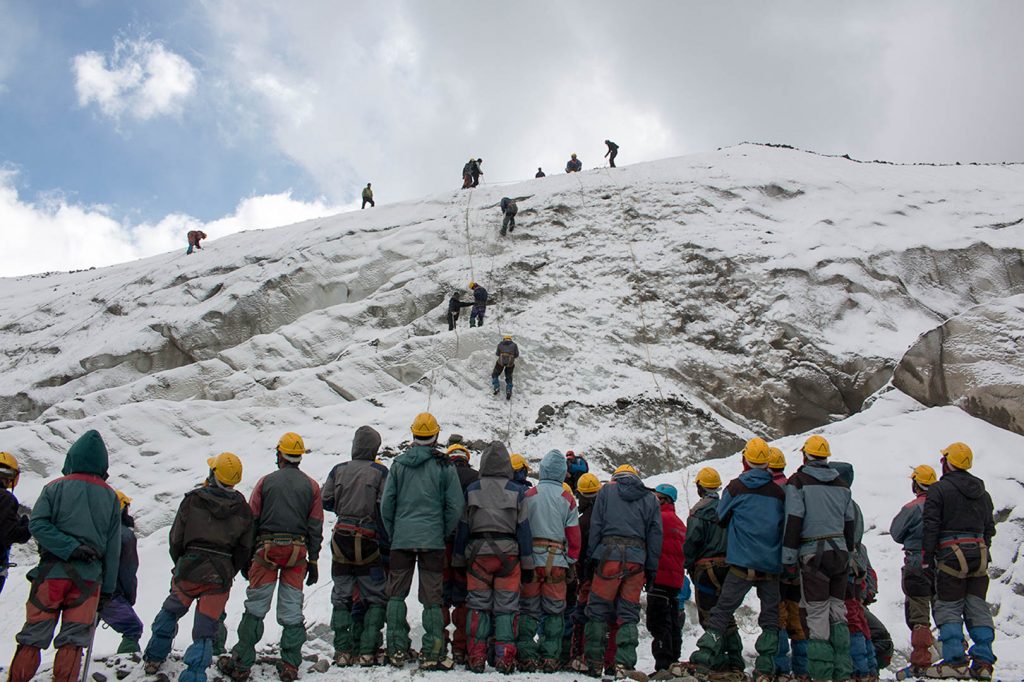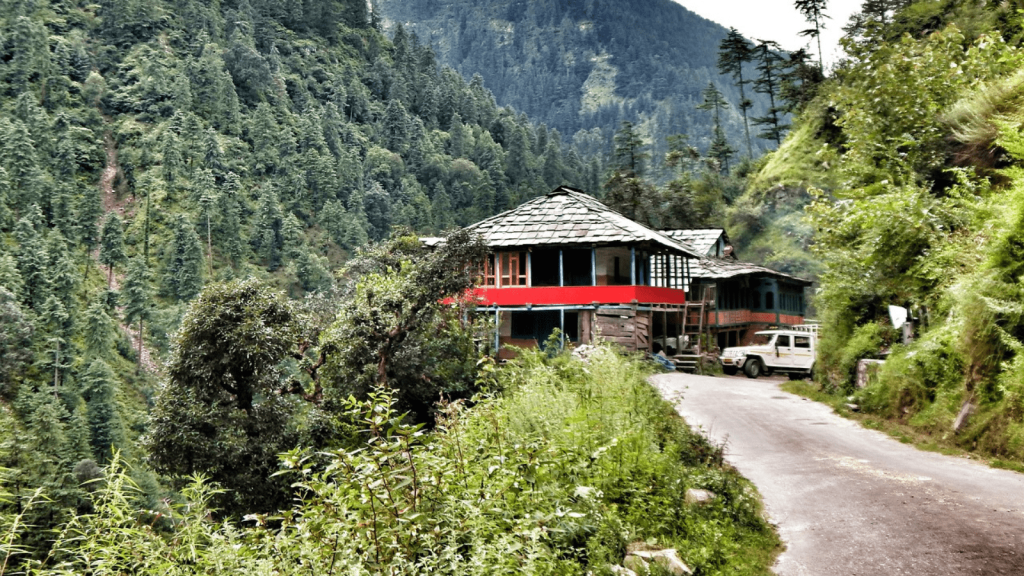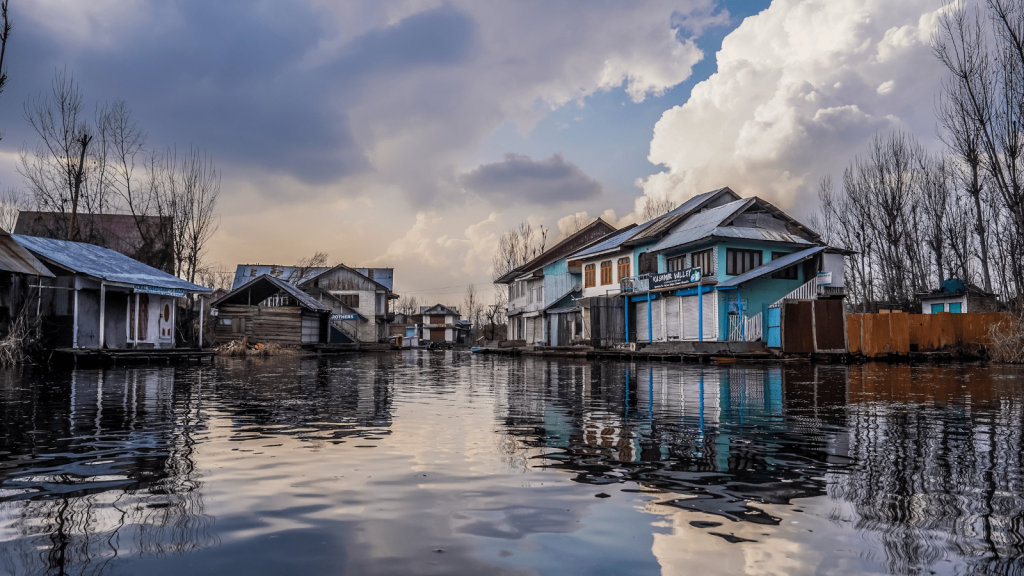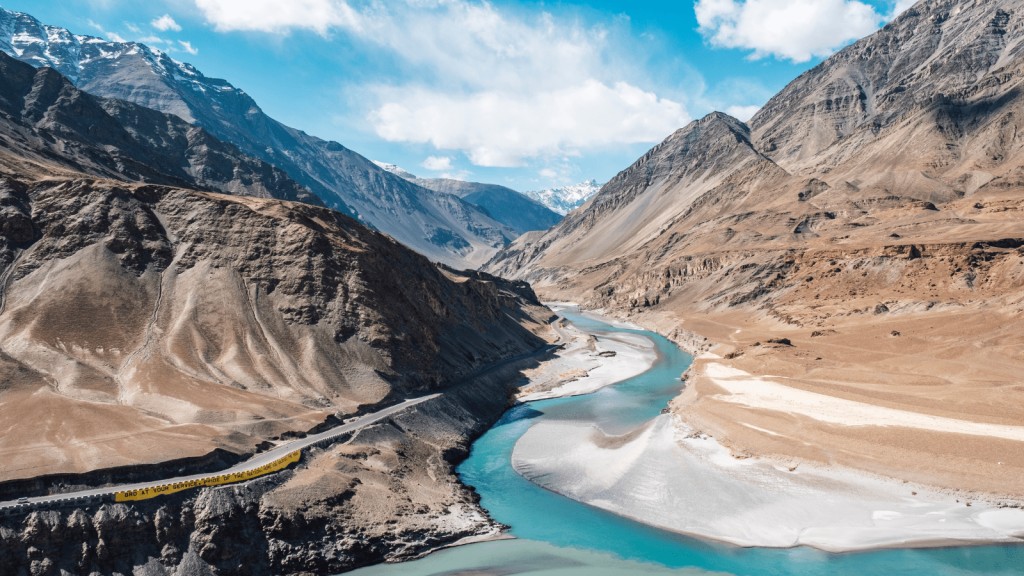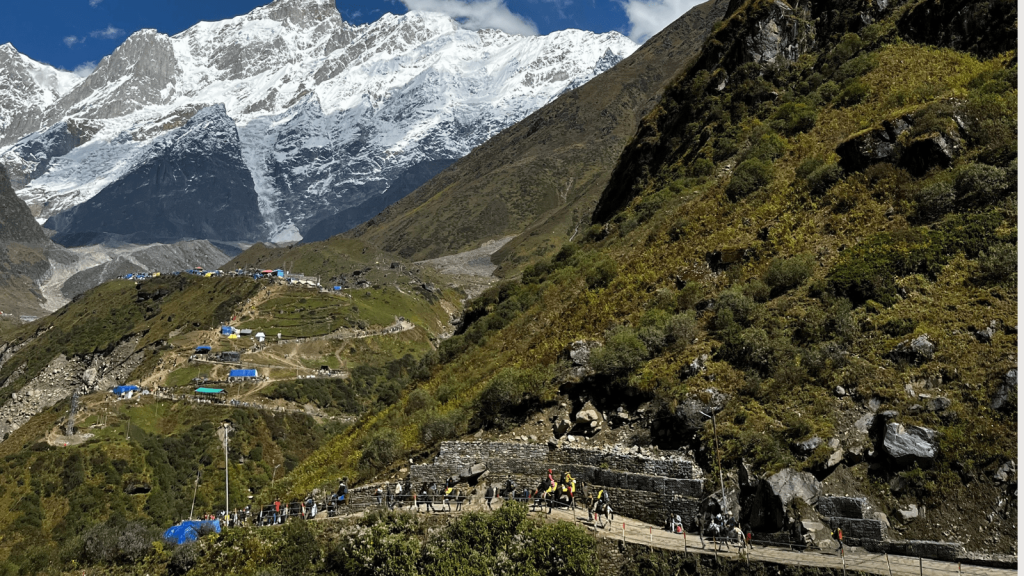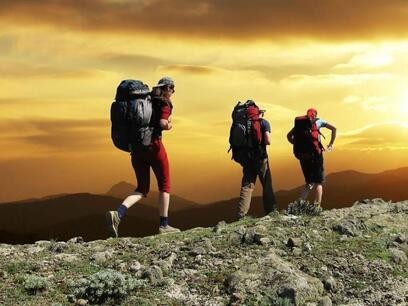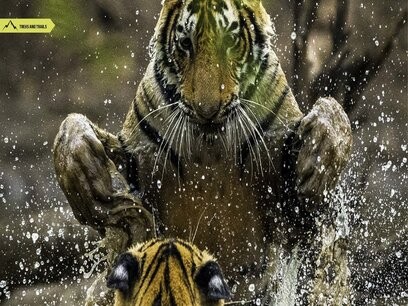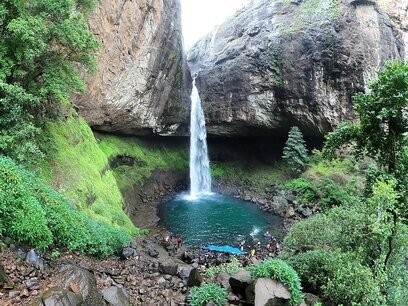A Must-Go-Through Guide to Basic Mountaineering Course in India
Most people, who love to trek in the mountains, think of setting their sights on climbing a Himalayan top. Indeed, they always seek something to perform that is more and more challenging. Once they successfully carry out low height treks to high altitude passes. Maybe climb a summit or two, they at times find themselves stuck they wish to go up any higher and scale Himalayan Peaks.
To go on a thriving journey of being a high elevation trekker to a rock climber. You must get to know about different types of tools, including all those clips & spikes, rope — the technique of using them to climb or come down the mountain slopes without any problem. Here, you also need to learn how you can hold your fall and save yourself or a fellow mountaineer. The only way to become familiar with all this is by getting enrolled in a basic mountaineering course.
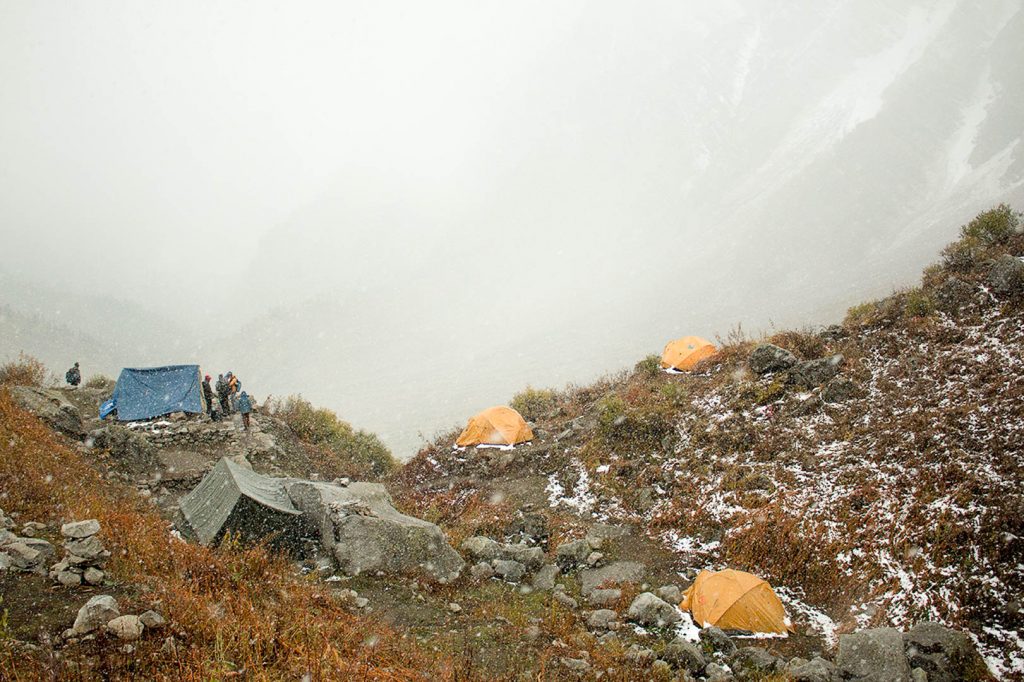
Key Benefits of Basic Mountaineering Course
You get to learn various techniques a mountaineer must know. This course trains you to make out different features of the incredibly vibrant mountain settings, how they act, and how you have to work in concert with them. You become a government certified hiker. Your confidence level gets higher. You become efficient in climbing mountains and learn how to save time. You get exposure to high-altitude. You become an independent person, as on sky-scraping mountains, you can’t look forward to instructors to control your movements all the time. Lastly, you can apply for other Advance Mountaineering Courses to become more proficient.
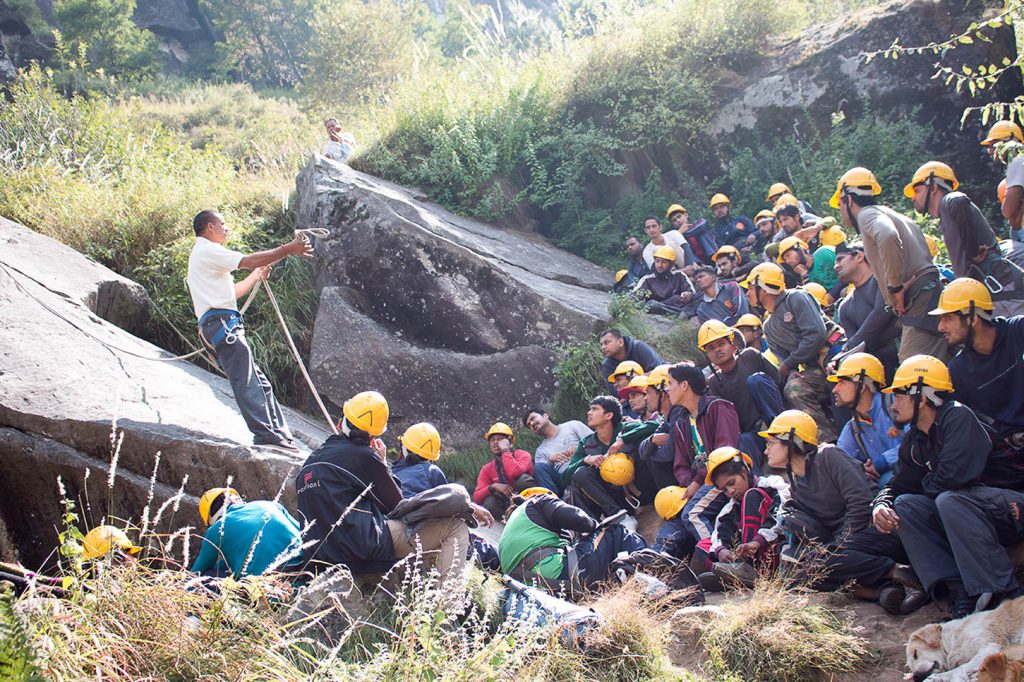
Duration of the Mountaineering Course India
For your information, this course generally goes as long as 26 days wherein you get to learn outdoor fanatic techniques in hiking and snow & ice craft. And after completion of the course, you get a certificate of being rock climber by the government.
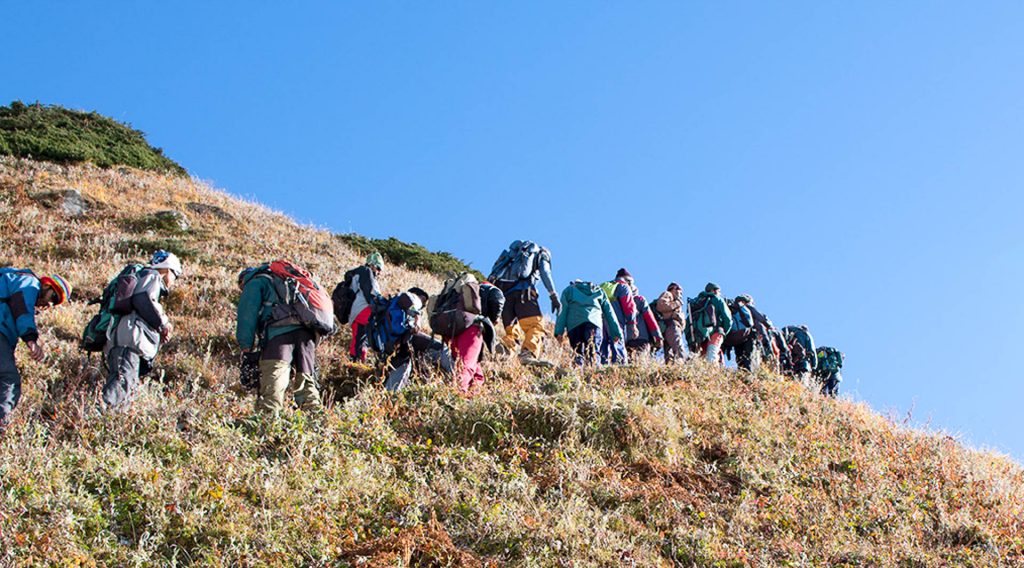
What are the Pre-requirements of Basic Mountaineering Course?
For the course enrolment, you have to be at least 18 years old with base-level strength as you will be asked to run 5 to 8kms daily. So, the expert’s recommendation is to perform push-ups as well as crunches. Besides, you should be capable of carrying an eight to twelve kgs bag-pack for six hours climb (as a minimum) for the period of trekking to base camp.
The Famous Indian Institutes That Offer This Course:
- Nehru Institute of Mountaineering, Uttarakhand
- National Institute of Mountaineering and Allied Sports (NIMAS), Arunachal Pradesh
- Himalayan Institute of Mountaineering, Sikkim
- Atal Bihari Vajpayee Mountaineering and Allied sports Institute, Himachal Pradesh
- Jawahar Institute of Mountaineering, Kashmir
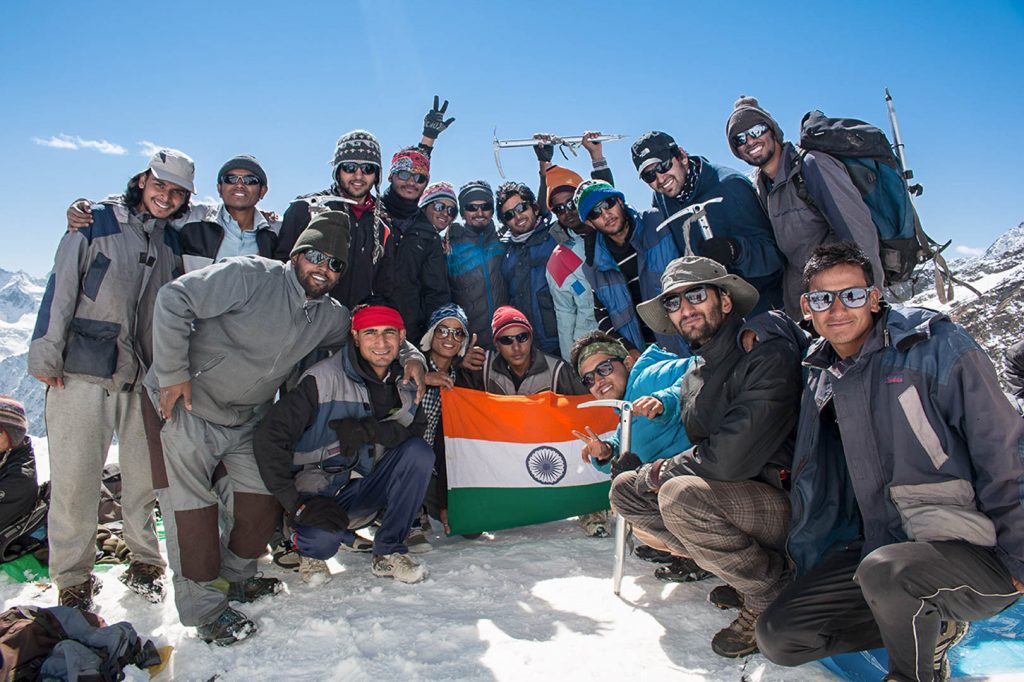
Gear and Clothes for Mountaineering Course
Institute Provides with bag-pack, sleeping bag, water bottle, feather jacket, hiking shoes, snowshoes and so on. Apart from this, you’ll also get outfits that are important in high-altitude together with all-inclusive rock climbing kit.
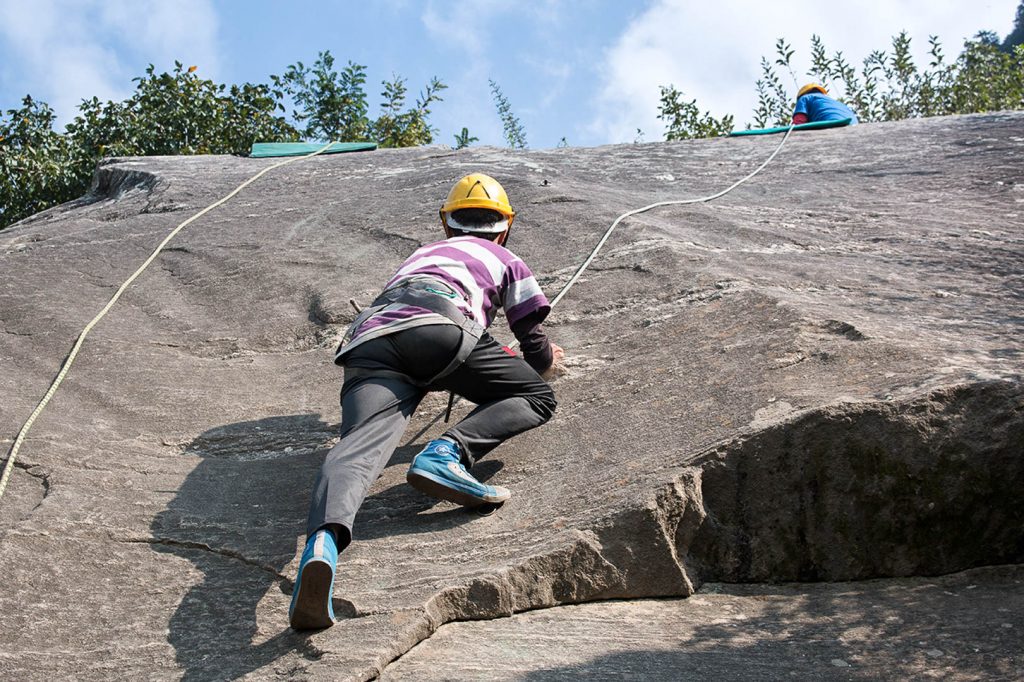
Helpful Things to Keep Count Of
For you, it is vital to note down that your instructors will always be keeping an eye. He will observe your fitness as well as performance, and you’ll get your good or bad scores on that basis only. What is more, only when you attain ‘A’ Grade in your certificate, you will meet the criteria of taking admission in Advance Mountaineering Course. If not, then you’ll need to do this course again. Also, with ‘B’ grade, you will become a certified rock climber, but you will be not qualified for advanced courses.
So, if climbing a mountain is your dream, then it is advised to first embark on a mountaineering course before the climb. Go online to search for a hiking course and the best institution you are comfortable with the location wise.
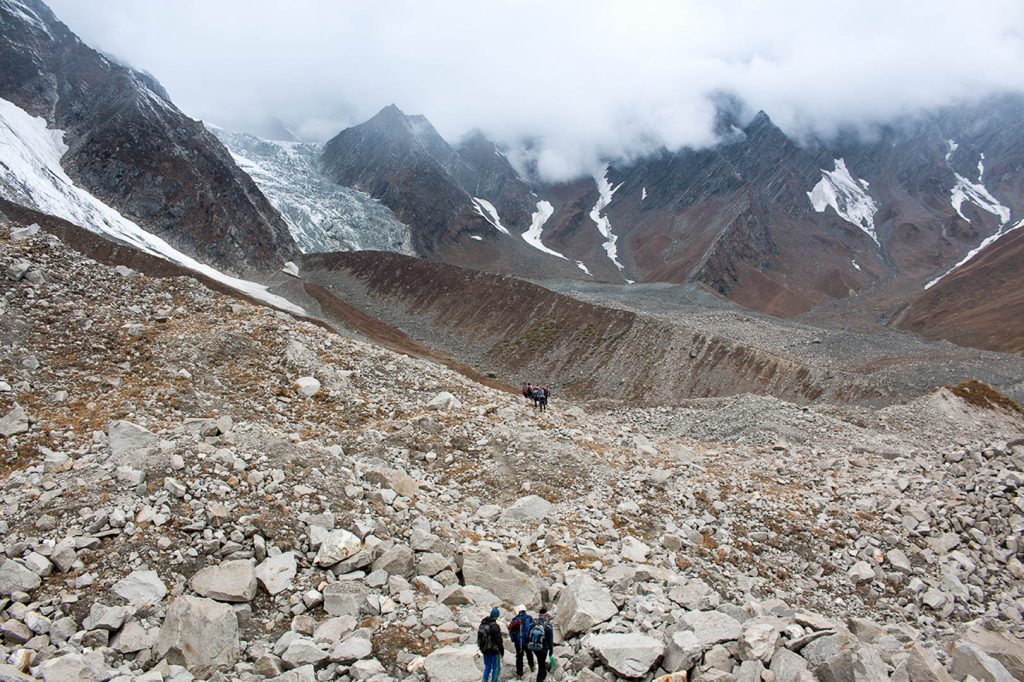
The Basic Mountaineering course
Mountaineering course is the stepping stone to the world of rock, snow and ice climbing. Mountaineering is the combination of rock climbing, wall climbing, rappelling, hiking, skiing, ice craft and other activities to scale peak mountaineering. The course has its schedules for 26 days in which one must follow those strictly.
First, ten days is rock climbing training, in which we stay at our mountaineering institute. For rock climbing training we go to a rock field, then after ten days, we go to a higher camp elevated on 12,000 feet. There we get two days to acclimatize our body so we can be trained for snow craft and ice craft. After our acclimatization, our training goes on snowfield for the next four days. After snow craft, we go to the ice field for the next four days to train ourselves too hard.
After completing our training on snowfield and ice field, there is a height gaining day where one must achieve the high altitude base camp. Later come back down, after completing height gaining there is survival night where one must sleep with just one rubber mat. The next day we have a free session and a cooking day where one must cook the food on their own and have it for lunch. In the evening everyone plays games like volleyball, tug of war, treasure hunt.
In the morning we leave our higher camp and go back to our institute, after reaching the institute we have a rest day. After completing training on the more upper field, there is river crossing training for two days, and after that, there is a practical exam paper. In the examination hall of what you have studied until now, you need to answer those questions. The last day is the ceremony where everyone gets their mountaineering badges and leaves the institute.
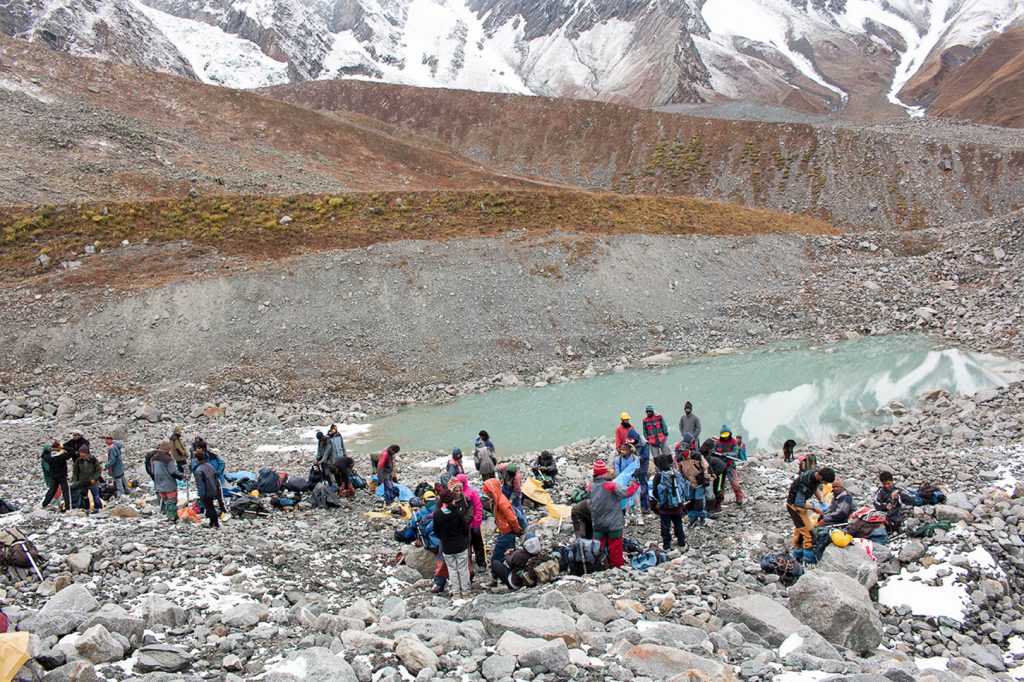
First Ten days Rock Climbing Training
The first ten days of our training are rock climbing training, get up early at 5 am and by 5.30 am everyone needs to be standing in one line. There is morning exercise where everyone starts jogging around the institute outside the institute; there are few exercises like squats, bridge, high jumps, running. After completing our morning PT, there is a breakfast break to have your breakfast and get ready to go to the rock field for rock climbing training. Rock filed cover your climbing, rappelling, jumaring, shoulder rappelling; you get the knowledge of rock and how one can climb up and rappel down the cliff in different techniques. Instructors will give every detail knowledge of types of equipment used for climbing.
After completing rock training from 8 am to 1 pm we come back to our institute for lunch break after our lunch break we have a lecture about mountaineering. Where our instructors teach us and give us a knowledge of high altitude peaks, about the climatic condition, hoe one must identify avalanche-prone area is. After the lecture we have 5 min rest then there are knots practice training where instructors give us details knowledge about knots and one must practice. After knot session, there is an obstacle training where one must go through it various obstacles like a rubber tire, big wall, wooden bars, under the mud. One must complete three rounds compulsory of obstacle training. After obstacle training, we have our dinner by 7.30 and after dinner rest up.
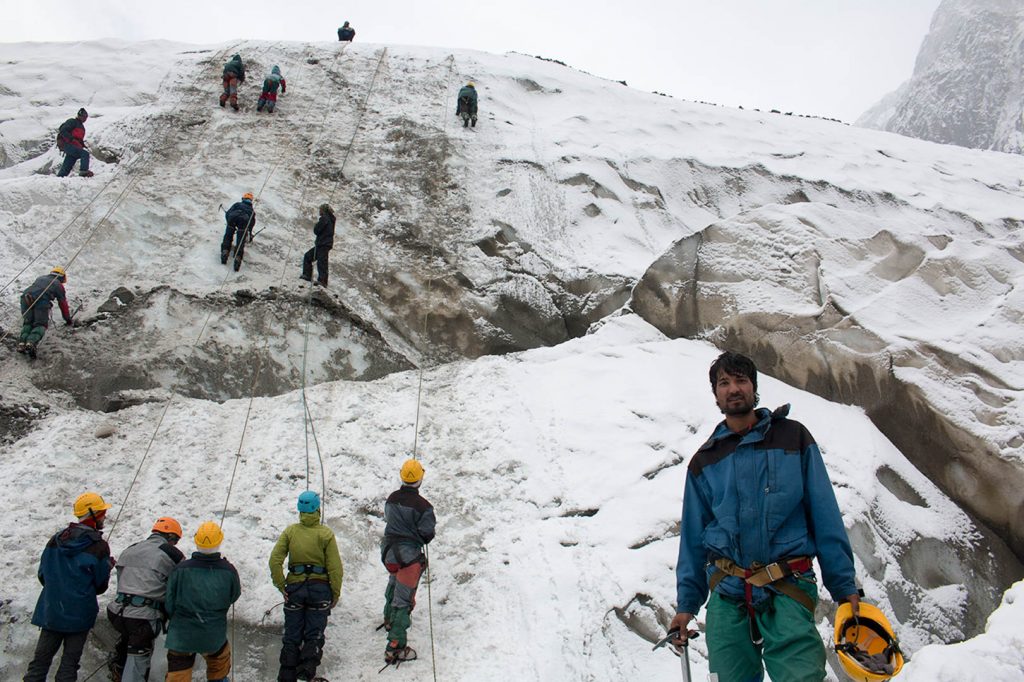
Snow Craft Training
Snow craft is a sheet of snow were you have your training session, how to walk on snow, how to slide on it, how to self-arrest yourself. An instructor will brief you about the types of equipment used on snow for climbing. They make you practice the whole day after completing snow craft training come back to base camp and rest this continues for the next three days.
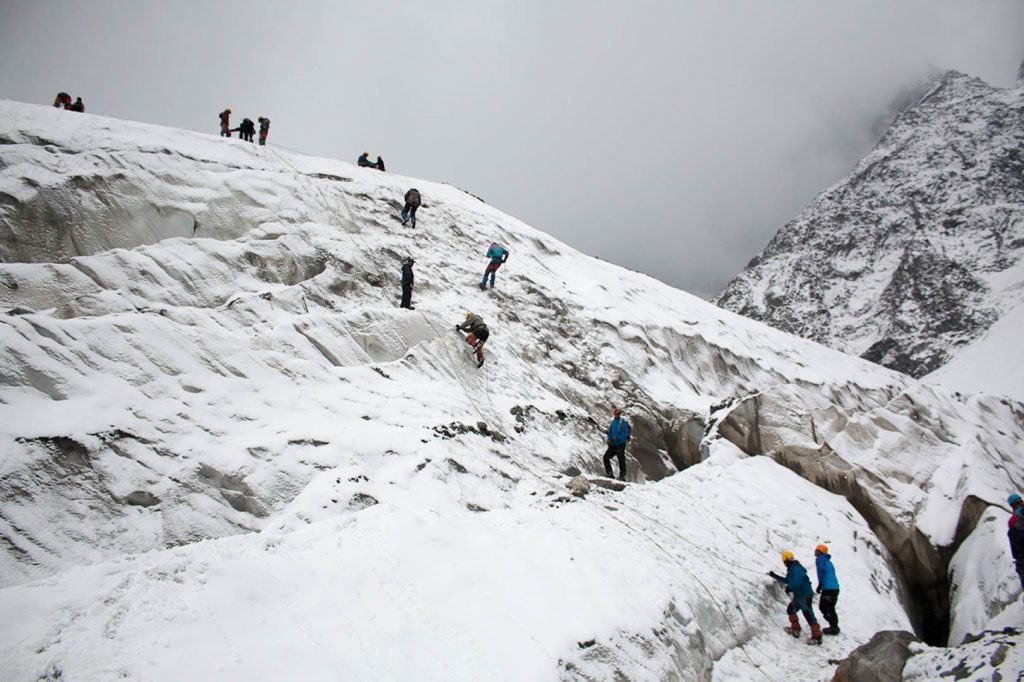
Ice craft Training
After you complete Snow craft training, there is an ice craft. The practice where everyone trained on how to climb ice wall, how to use your crampons and ice axe, how to self-arrest, how to rescue if you stuck in a crevasse, one must climb the ice wall by their own and come back down. After completing our ice field training, we trek back to base camp this continuous for the next three days.
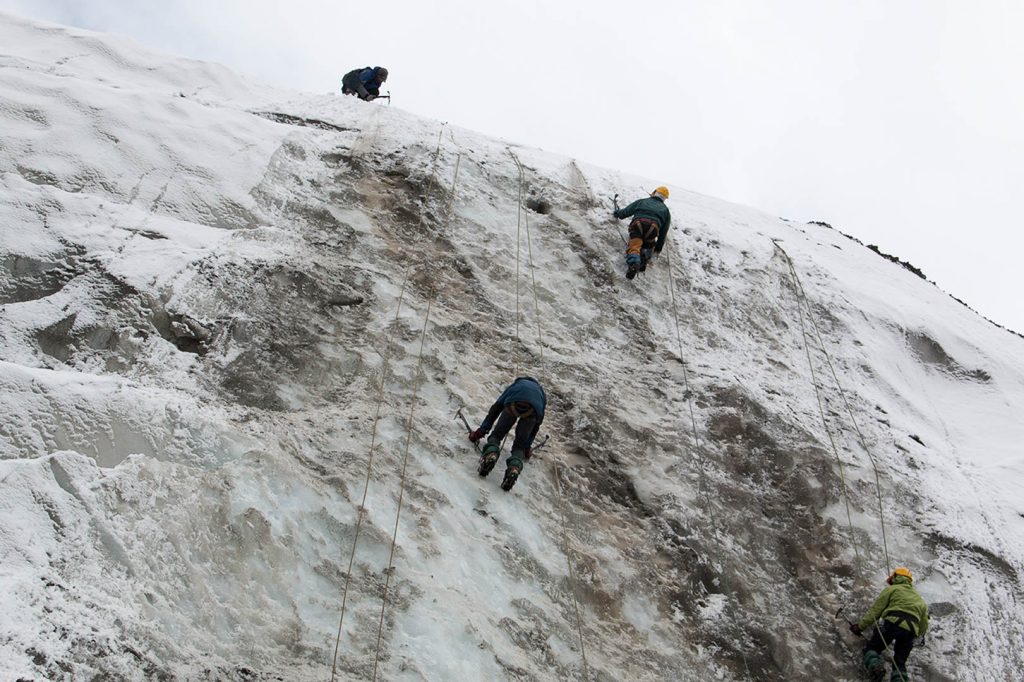
Height Gaining and Survival Night
After you complete our ice craft training, a new day is waiting for us, which is more complicated than ice craft we need to go for height gaining. Everyone needs to scale the height from 11,000 feet to 16,000 feet in six hours which is a way too tiring for everyone. By gaining such height in such a short time, many students face few health issues some may also quit, reaching on the top feels like you are above everyone in this world and high Himalayan Mountains in front of you covered with snow. We trek and come back to base camp, we have our snacks and rest for a while.
In the evening we have an assembly were instructors give a surprise to everyone that tonight is the survival night for everyone we are allowed to take just one rubber mat on which we can sleep. We are not allowed to go inside the tent and not allowed to use a sleeping bag. We are spending the whole night in chilly winds and -5 temperature. After spending the entire night in cold temperature at 6 am instructors arrive. Instructors make an announcement that now everyone can use their respective tent for one hour sleep, that is the best moment for everyone. There is day leisure where we have bushcraft practicing sessions for two hours, and we are free to roam around the campsite. The next day we head back to our institute.
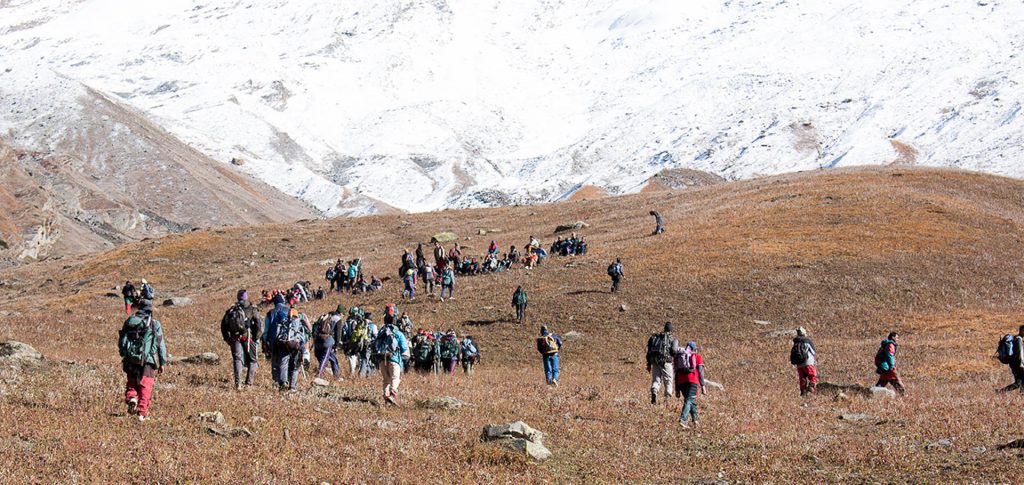
Adam Day
Adam is a free day for everyone where one can roam around the Manali market for shopping and have fun or spent time in the institute sleeping the whole day.
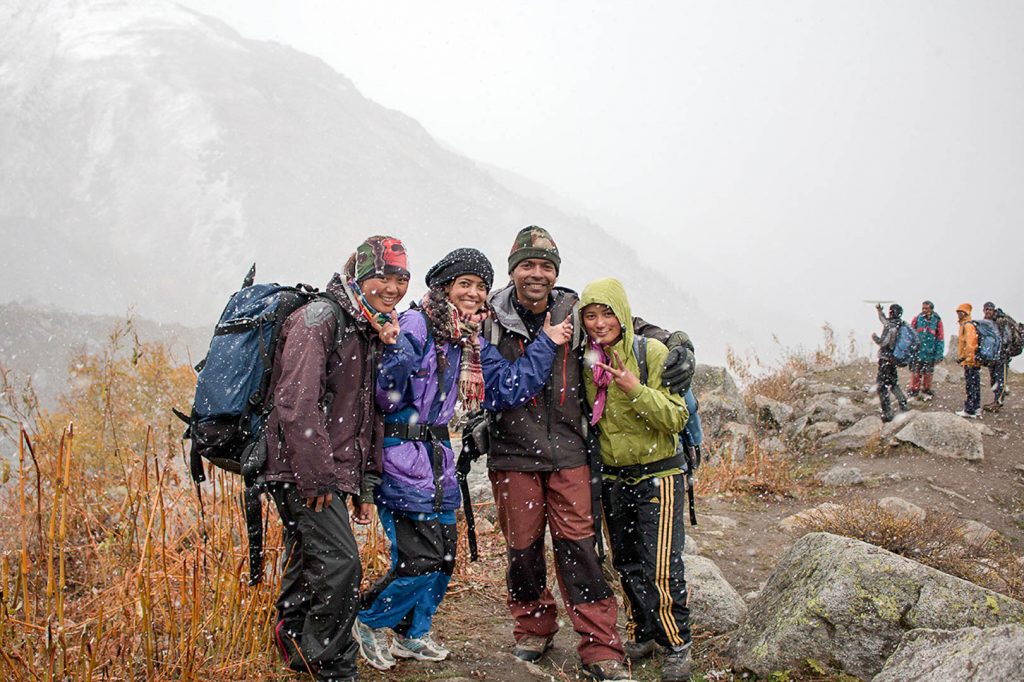
River Crossing Technique
After having a leisure day, we were too lazy to get up early in the morning go for morning exercise and after that going for a river crossing session. Our session started we were guided first to see the rapids of the river, how to cross a river using different techniques. We started doing it on our crossing a river it was difficult to cross a river with such high water flow. But you have no option you have to cross after river crossing we were back to our institute resting and thinking about the next challenge what instructors would say.
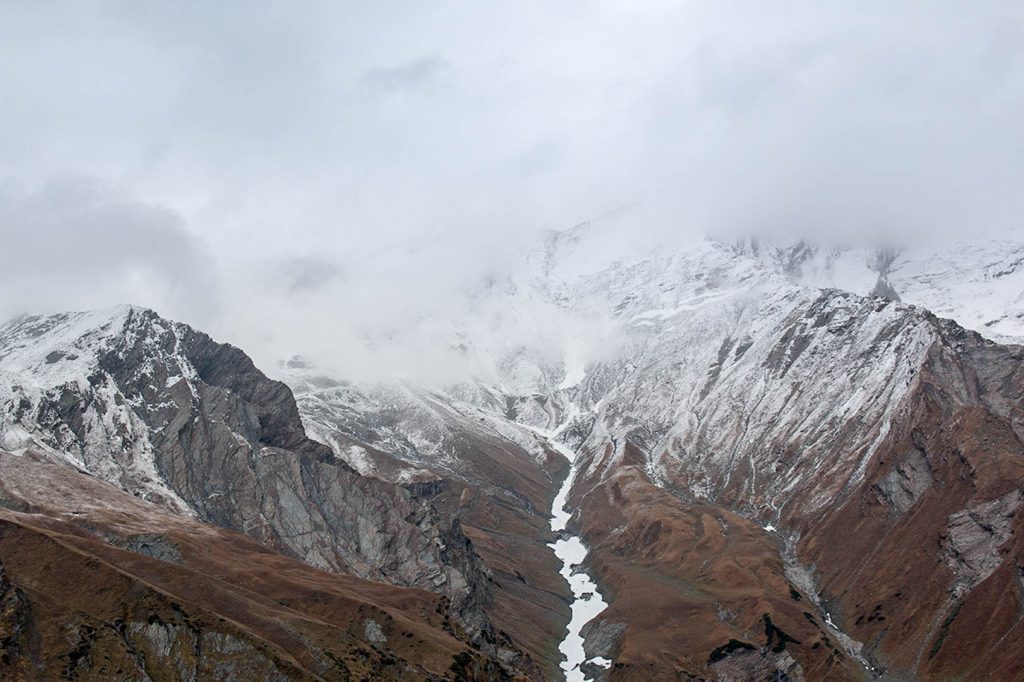
Climbing test
After completing rock field, snow craft, ice craft, river crossing today is the climbing test. Where everyone needs to climb a boulder in proper technique if you won't, they give grades on that basis.
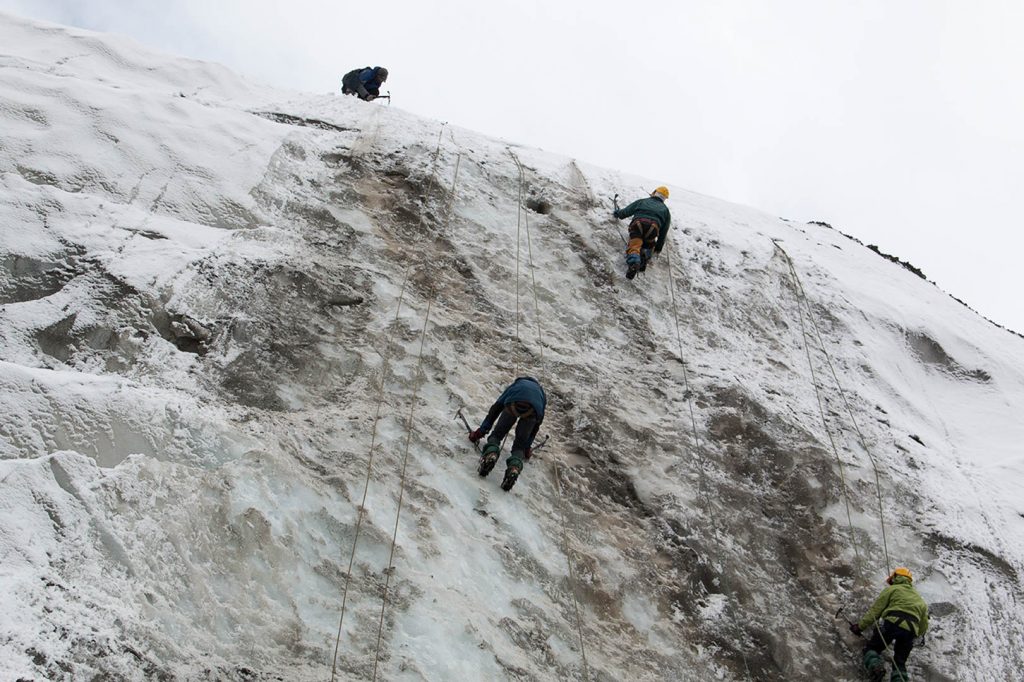
Written examination
There is a written examination where everyone has to solve the question paper. Questions based on what you have studied practically on the field you have to write it down all.
Closing Ceremony
The best day where everyone rewarded with mountaineering badges. If students want to perform in singing, dancing or play a skit, they are free to perform and after the closing ceremony. If anyone wants to stay at institute remembering how days passed and wish to recollect everything can stay the night.
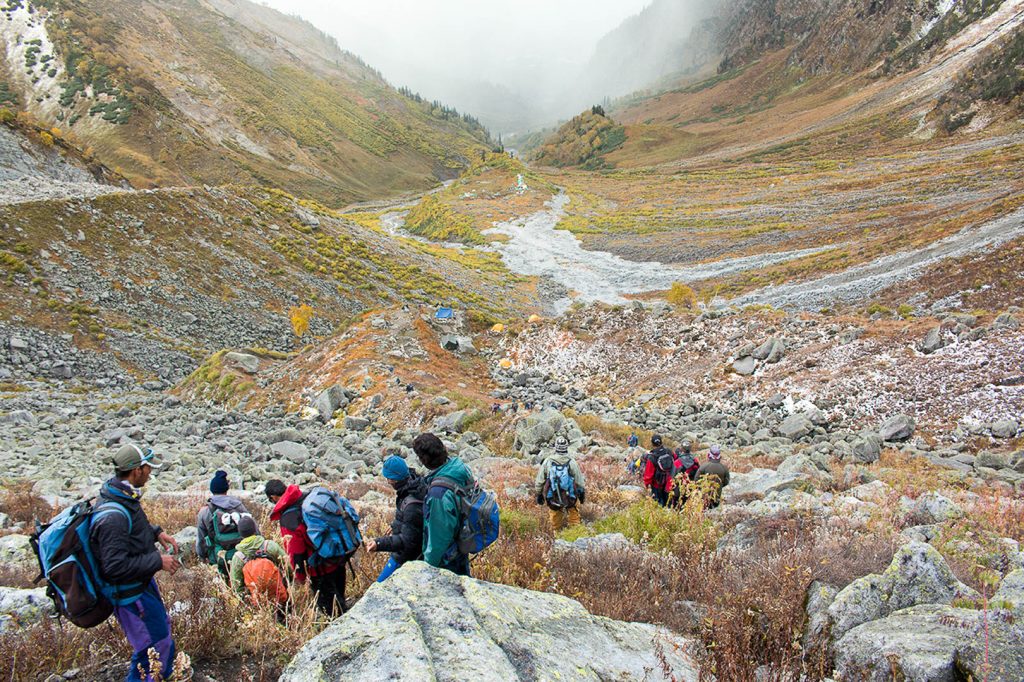
Mountaineering Institute India
There are five nationalized mountaineering institutes in India which are considered to be the best. In the order of establishment date, they are:
There are five nationalized mountaineering institutes in India which are considered to be the best. In the order of establishment date, they are:
1. Himalayan Mountaineering Institute, Darjeeling (founded in 1954)
2. Atal Bihari Vajpai Institute of Mountaineering and Allied Sports, Manali (founded in 1961)
3. Nehru Institute of Mountaineering, Uttarkashi (founded in 1965)
4. Jawahar Institute of Mountaineering, Jammu and Kashmir (founded in 1983)
5. National Institute of Mountaineering and Allied Sports, Arunachal Pradesh (founded in 2013)
Most people look for the best institute while registering for the basic mountaineering course. I choose the one who had the least waiting time with an option to register online – NIMAS, Arunachal Pradesh. The waiting time is the most significant difference among the institutes.
The course fee also varies between the institutes but still significantly subsidized, since the Ministry of Defence supports them. This fee includes the training fees, food and stays for the duration of the course.
Here are the approximate waiting times and course fees.
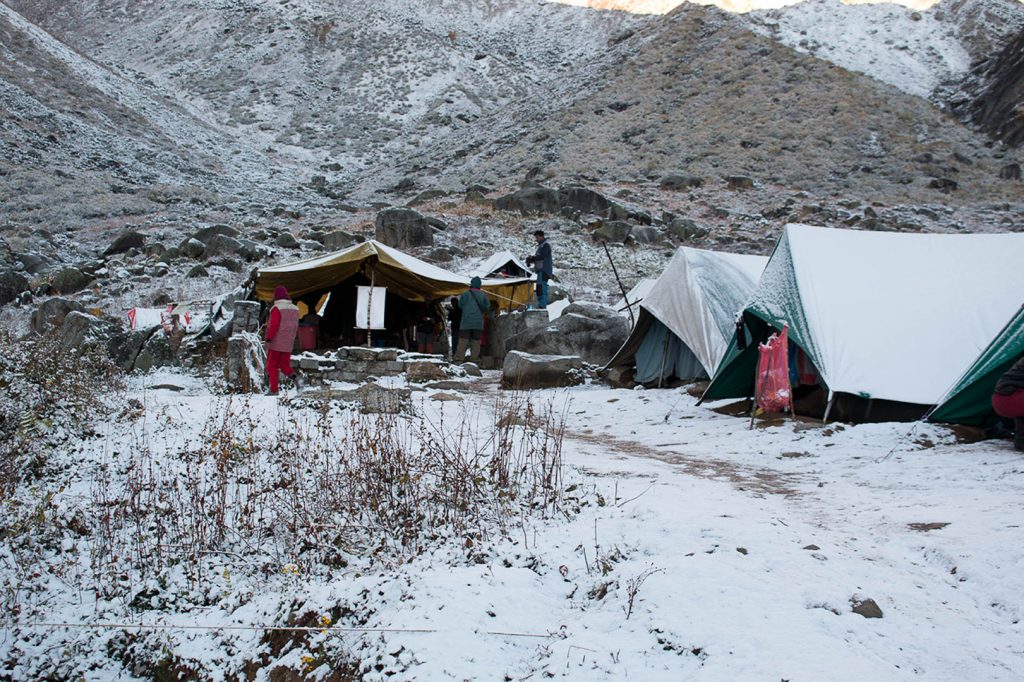
Mountaineering Institute Course Fees India
Here are the approximate the waiting times and course fees.
| Institute | Waiting time for booking | Cost of Course for Indians | Cost of Course for Foreigners |
| NIM (Uttarkashi) | 2 yrs. | Rs.8,000 | $800 |
| ABVIMAS (Manali) | 6 months | Rs.17,000 | $850 |
| HMI (Darjeeling) | 8 months | Rs.12,000 | $800 |
| JIM (J & K) | 6 – 8 months | Rs.14,000 (7,600 J&K residents) | $800 |
| NIMAS (Derang) | No wait time | Rs.15500 | N/A |
